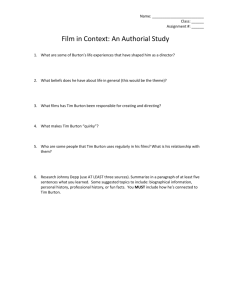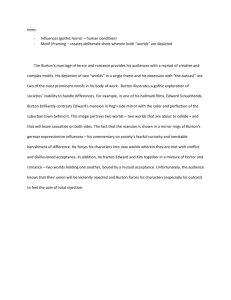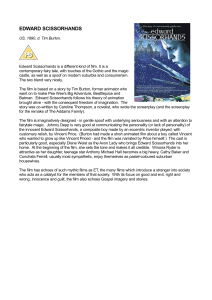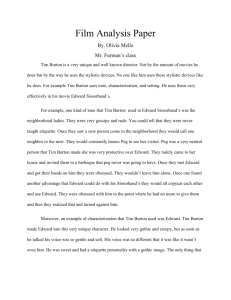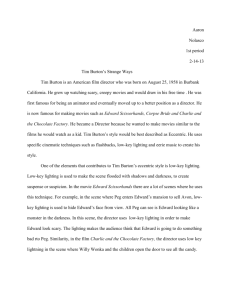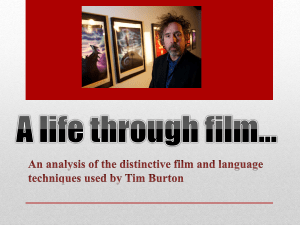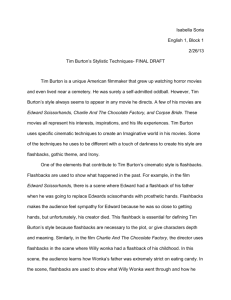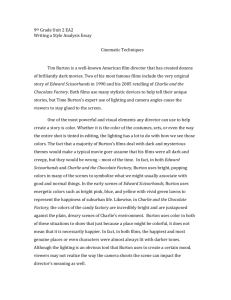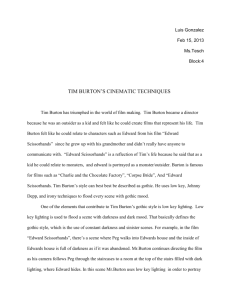Tim Burton Style Analysis: Setting, POV, Motifs
advertisement
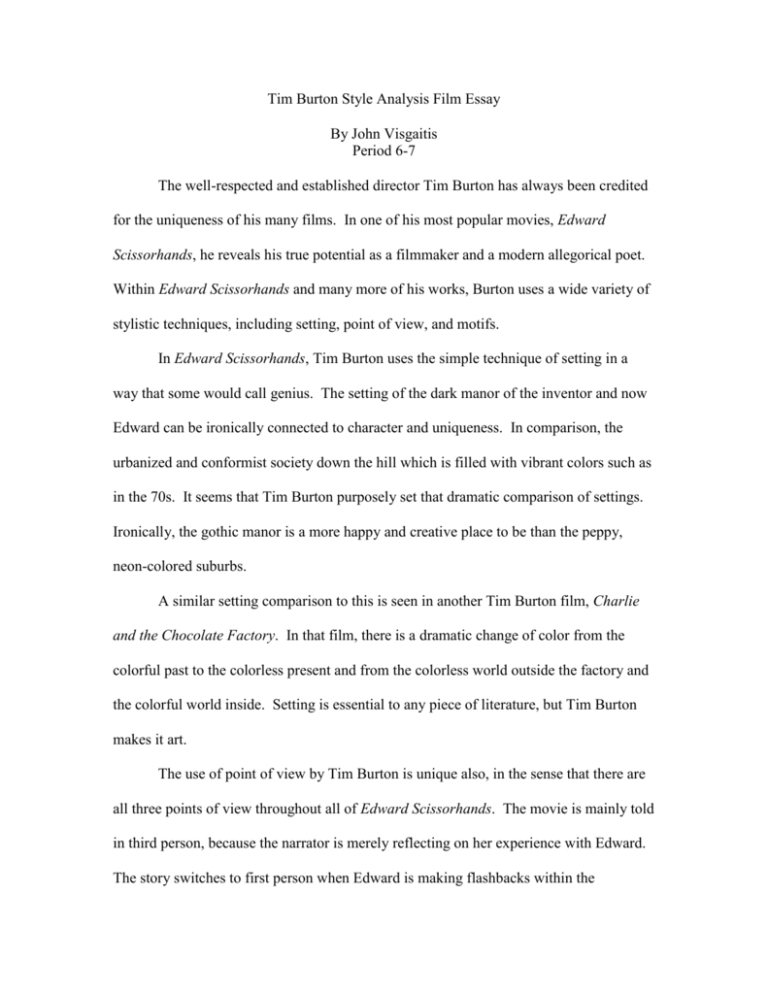
Tim Burton Style Analysis Film Essay By John Visgaitis Period 6-7 The well-respected and established director Tim Burton has always been credited for the uniqueness of his many films. In one of his most popular movies, Edward Scissorhands, he reveals his true potential as a filmmaker and a modern allegorical poet. Within Edward Scissorhands and many more of his works, Burton uses a wide variety of stylistic techniques, including setting, point of view, and motifs. In Edward Scissorhands, Tim Burton uses the simple technique of setting in a way that some would call genius. The setting of the dark manor of the inventor and now Edward can be ironically connected to character and uniqueness. In comparison, the urbanized and conformist society down the hill which is filled with vibrant colors such as in the 70s. It seems that Tim Burton purposely set that dramatic comparison of settings. Ironically, the gothic manor is a more happy and creative place to be than the peppy, neon-colored suburbs. A similar setting comparison to this is seen in another Tim Burton film, Charlie and the Chocolate Factory. In that film, there is a dramatic change of color from the colorful past to the colorless present and from the colorless world outside the factory and the colorful world inside. Setting is essential to any piece of literature, but Tim Burton makes it art. The use of point of view by Tim Burton is unique also, in the sense that there are all three points of view throughout all of Edward Scissorhands. The movie is mainly told in third person, because the narrator is merely reflecting on her experience with Edward. The story switches to first person when Edward is making flashbacks within the narrator’s flashback. It also switches to second person when Edward is being paraded in front of the community. This gives a striking similarity to Charlie and the Chocolate Factory where all three points of view were also used. First person was used when Charlie gets the ticket, second person for the majority of the tour, and third person for the flashbacks and narrations. Tim Burton has a unique spin on the traditional point of view concept that some may say makes him one of a kind. The motifs that Tim Burton uses are the icing on the cake of his success. This use of motifs of all types is regarded as masterful in the film industry. Though there are many recorded motifs that Burton uses, one of the most important in Edward Scissorhands would be conformity vs individuality. This motif comes into play with Edward’s first appearance. When Peggy first encounters him, there is a sort of irony because she sees that he is a loner, therefore she thinks he is unhappy. But, as the story unfolds we see that it is Peggy and the other conformists that are actually unhappy. The same motif of conformity vs. individuality was used in Charlie and The Chocolate Factory. Willy Wonka is a similar character to Edward not just because he was portrayed by the same actor, but also because he chooses to set himself apart from the mainstream to follow what he considers his legacy. Like Edward, Willy Wonka does not conform to contemporary ideology. These characters are just examples of how Tim Burton uses the same motifs in his movies. The way Tim Burton uses the techniques of setting, point of view, and motifs throughout his movies, gives his works a certain similar feeling or mysterious mood. As a film maker, Tim Burton seems to break some rules, such as the rule of using only one point of view without clear transitioning. The radical contrast in his settings is also an example of how Tim Burton uses unexpected techniques in his films. His use of reoccurring motifs, either subliminal or relevant to the story itself, is another example of how his unorthodox techniques are so effective. Because of these techniques, audiences know what to expect from a Tim Burton movie; a blockbuster!
